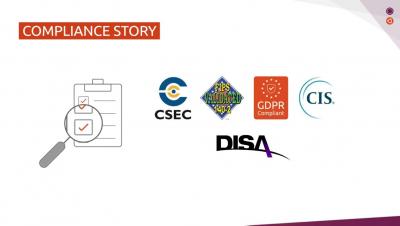Operations | Monitoring | ITSM | DevOps | Cloud
Linux
Monitor Ubuntu Advantage FIPS configurations
In regulated environments, some machines must adhere to strict cryptography requirements designed to protect systems from being cracked, altered, or tampered with. Using cryptographic modules that are FIPS certified or compliant ensure a systems’ encryption solutions adequately protect its digital assets. FIPS validated operating systems are a prerequisite for government agencies, their partners, and those wanting to conduct business with the federal government.
The State of Robotics - News from January 2022
Building and running FIPS containers on Ubuntu 18.04
Whether running on the public cloud or a private cloud, the use of containers is ingrained in today’s devops oriented workflows. Having workloads set up to run under the mandated compliance requirements is thus necessary to fully exploit the potential of containers. This article focuses on how to build and run containers that comply with the US and Canada government FIPS140-2 data protection standard.
Enabling AWS Systems Manager on Ubuntu Pro
Some Useful Linux Networking Commands
One of the most well-known and commonly used open-source operating systems is Linux. It's a clone of UNIX, however unlike UNIX, it's free to download and use. Despite being an open-source operating system, it has a safe and resilient architecture, and many individuals and companies rely on it. You can, interestingly, make your own Linux version. You can accomplish so by simply downloading Linux and making the necessary adjustments. In essence, we can distinguish them as different Linux versions.
An overview of OpenStack storage
OpenStack storage is probably one of the most complex topics in OpenStack architecture right after networking. There are many different storage options, at least a few storage services, and tons of supported storage backends. It is very easy to get lost. But do not worry, there is hope. Since OpenStack was initially created as an open-source implementation of the Amazon Web Service Elastic Compute Cloud (AWS EC2), its storage architecture is quite similar to leading public clouds.
Announcing official Icinga packages for RHEL, Amazon Linux 2 and SLES
We are pleased to announce the general availability of Icinga installation packages for Red Hat Enterprise Linux, Amazon Linux 2 and SUSE Linux Enterprise Server. We extend the list of supported operating systems to give you even more options where you can run Icinga. At the same time we respond to changes and requirements by operating system vendors.
Low latency Linux kernel for industrial embedded systems - Part III
Welcome to the concluding chapter of this three-part blog series on the low latency Ubuntu kernel for industrial embedded systems. Each blog is standalone and can be read independently from the others, although you may want to start at the beginning for some continuity. If you need a quick refresher on userland and kernel space, we recommend you check Part I out first.
The State of Robotics - January 2022
What a way of starting the year! Setting milestones, helping those in need, and daring to dream. January 2022 starts with one of the biggest technological conferences — CES. So, in this piece, you will find a breakdown of three robots in our usual style. But there’s more… we also bring a story to inspire you all. It’s a great experience writing this blog, where every month news are abundant. Thank you all for contacting us and sharing your stories.











